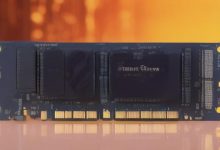Linux 进程实验原理:探索操作系统的核心秘密
Linux操作系统以其开源、稳定和高效的特点,被广泛应用于服务器、嵌入式系统和个人计算机等领域,理解Linux的进程管理是掌握其核心机制的重要一步,本文将详细探讨Linux进程实验的原理及其实现方法。

实验目的
1、理解Linux进程通信的基本原理和方法:包括管道、共享内存、信号量和消息队列等IPC(InterProcess Communication)机制。
2、掌握进程间的管道通信编程:通过创建管道实现父子进程间的数据传递。
3、掌握进程间的内存共享编程:通过共享内存段实现高效的数据交换。
4、掌握进程间队列通信编程:使用消息队列和信号量实现复杂的进程同步和通信。
5、深入理解进程状态及转换机制:包括进程创建、终止、阻塞和唤醒等状态变化。
实验环境
1、虚拟机软件:VMware 16 Pro
2、Linux操作系统版本:CentOS764位
3、编译器:GCC
4、编辑器:Vim或任何文本编辑器
1、进程状态命令
使用ps命令查看系统中所有进程的状态。

ps aux | grep <process_name>
ps命令输出字段解释:
| 字段 | 解释 | |
| PID | 进程标识号 | |
| TTY | 启动该进程的终端 | |
| TIME | 进程累计执行时间 | |
| COMMAND | 正在执行的命令名 |
2、进程控制命令
kill <PID>:向指定进程发送终止信号。
sleep 50 &:创建一个睡眠时间为50秒的后台进程。
3、进程控制相关的系统调用
fork():创建一个子进程。
#include <unistd.h>
pid_t fork(void);
wait()/waitpid():等待子进程结束并回收资源。
#include <sys/types.h>
#include <sys/wait.h>
pid_t wait(int *status);
pid_t waitpid(pid_t pid, int *status, int options);
exit():终止当前进程。
#include <stdlib.h>
void exit(int status);
vfork():创建子进程并与父进程共享地址空间。
#include <unistd.h>
pid_t vfork(void);
4、实例代码分析
示例1:进程创建与终止

#include <stdio.h>
#include <unistd.h>
#include <sys/types.h>
#include <sys/wait.h>
int main() {
pid_t pid = fork();
if (pid < 0) {
perror("fork failed");
return 1;
} else if (pid == 0) {
printf("This is the child process!
");
sleep(2);
printf("Child process exiting...
");
exit(0);
} else {
printf("This is the parent process!
");
wait(NULL);
printf("Parent process exiting...
");
}
return 0;
}
示例2:进程间通信 管道
#include <stdio.h>
#include <unistd.h>
#include <string.h>
int main() {
int fd[2];
pipe(fd);
pid_t pid = fork();
if (pid < 0) {
perror("fork failed");
return 1;
} else if (pid > 0) { // Parent process
close(fd[0]); // Close reading end
write(fd[1], "Hello, child!", 15);
close(fd[1]); // Close writing end
} else { // Child process
close(fd[1]); // Close writing end
char buf[128];
read(fd[0], buf, sizeof(buf));
printf("Received: %s
", buf);
close(fd[0]); // Close reading end
}
return 0;
}
示例3:进程间通信 消息队列
#include <stdio.h>
#include <stdlib.h>
#include <sys/ipc.h>
#include <sys/msg.h>
#include <sys/types.h>
struct msgbuf {
long mtype;
char mtext[100];
};
key_t key;
int msgid;
int main() {
key = ftok("progfile", 65); // Create unique key
msgid = msgget(key, IPC_CREAT | 0666); // Get message queue ID
pid_t pid = fork();
if (pid < 0) {
perror("fork failed");
return 1;
} else if (pid > 0) { // Parent process
struct msgbuf msg;
msg.mtype = 1; // Set message type
strcpy(msg.mtext, "Hello, child!"); // Copy message text
msgsnd(msgid, &msg, sizeof(msg), 0); // Send message
} else { // Child process
struct msgbuf msg;
long type;
msgrcv(msgid, &msg, sizeof(msg), 1, 0); // Receive message
printf("Received: %s
", msg.mtext);
}
msgctl(msgid, IPC_RMID, NULL); // Remove message queue
return 0;
}
实验结果与分析
通过上述实验,我们可以观察到以下几点:
1、进程创建与终止:在执行fork()后,父进程和子进程可以独立运行,子进程结束后,父进程会通过wait()函数回收子进程的资源。
2、进程间通信:使用管道和消息队列可以实现父子进程之间的数据传输和同步,确保数据的一致性和完整性。
3、状态转换:通过ps命令可以看到进程的状态变化,包括运行、阻塞和终止等状态。
本次实验通过实际操作和代码编写,使我们对Linux进程管理有了更深入的理解,掌握了进程的创建、终止以及进程间通信的方法,特别是管道、共享内存和消息队列的使用,为后续深入学习操作系统的其他功能打下了坚实的基础,通过实验,我们不仅提高了动手能力,还增强了对操作系统核心机制的理解。
以上就是关于“Linux 进程实验原理:探索操作系统的核心秘密”的问题,朋友们可以点击主页了解更多内容,希望可以够帮助大家!














